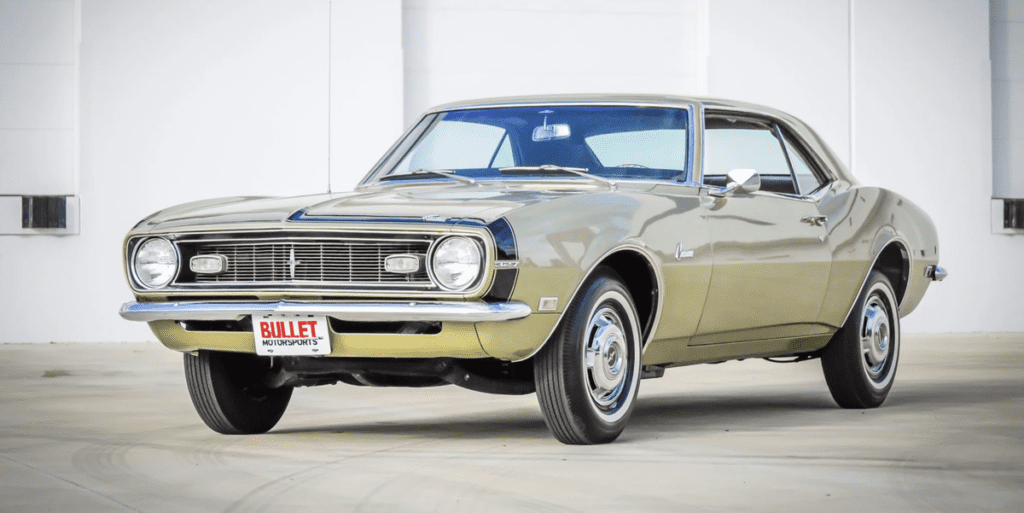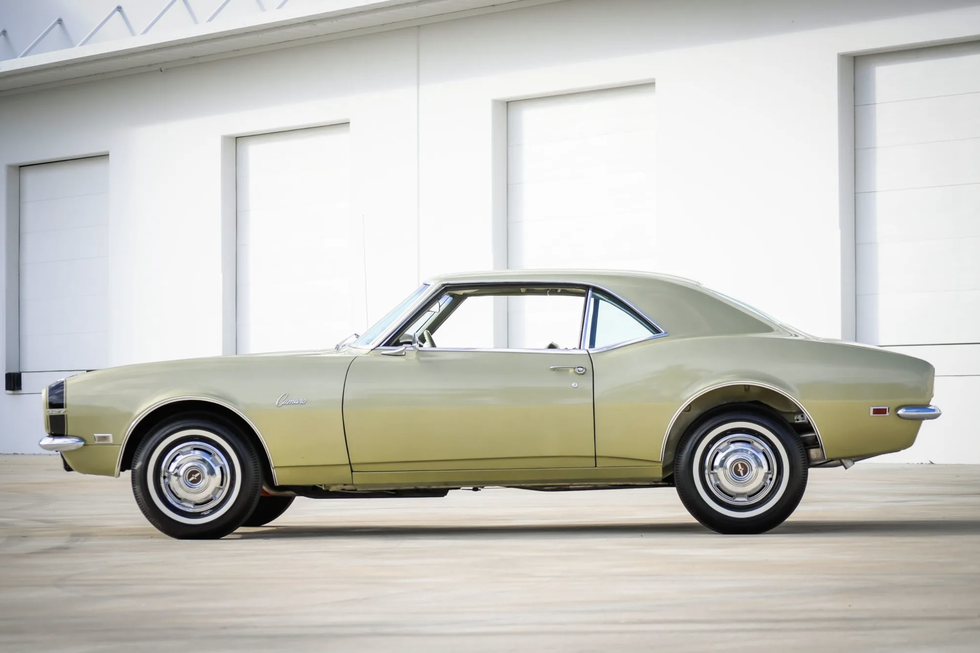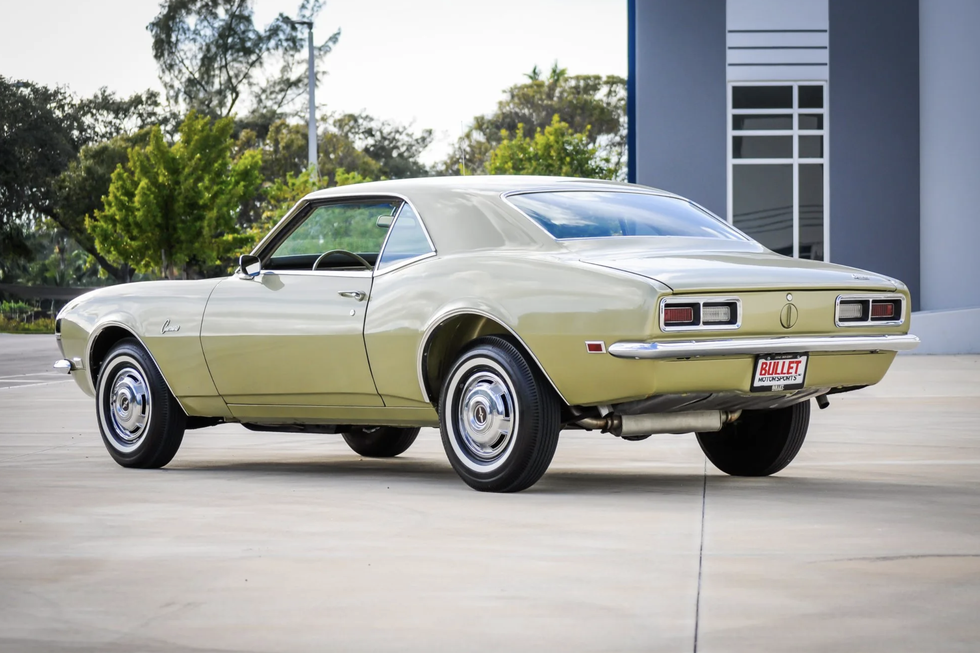This 1968 Chevrolet Camaro Reflects How It Really Was, and It's Our BaT Auction Pick

• This first-generation Chevy Camaro looks like it stepped out of a time warp.
• It has been restored in its original colors of Ash Gold paint over Gold vinyl upholstery.
• This auction ends on Wednesday, February 22.
Car and Driver
Today, when we see pony cars from the ’60s, they’re typically high-performance halo models and have often been further hot-rodded or restomodded into fearsome street machines. And while those SS396 Camaros, Cobra-Jet Mustangs, and Hemi ‘Cudas are the stuff of legend, for legions of owners back in the day the pony-car reality was much different. It was something exactly like what we have here in this 1968 Chevy Camaro.
Up for auction right now on Bring a Trailer—which, like Car and Driver, is part of Hearst Autos—this Camaro is a far most accurate period piece than is typically seen. It has a bit of punch courtesy of a 327-cubic-inch V-8, but that engine is tied to Chevy’s ubiquitous Powerglide two-speed automatic stirred by a horseshoe-shaped floor shift. The restorer somehow managed to resist the temptation to fill the wheel wells with slotted mags, torque thrust wheels, or even Chevy Rally wheels, instead sticking with 14-inch steelies wearing factory wheel covers and, yes, whitewall tires. And in contrast to the reds and blacks so popular with muscle-car builds, this Camaro’s Ash Gold reflects what was popular then. With its matching vinyl interior, it’s a golden oldie.

Bring a Trailer

Bring a Trailer
Cars like this are the reason the Big Three were able to turn out hundreds of thousands of Camaros, Mustangs, and the like during the pony-car heyday. They had a more youthful, sporty image than the standard Detroit fare, but they were still fairly practical and affordable.

Bring a Trailer

Bring a Trailer
Speaking of affordability, the bid at this writing is still shy of $7000 with five days to go. It surely will climb higher, but probably nowhere near what the typical restored early Camaro would bring. And yet it’s a truer representation of the pony-car era and, maybe, a bigger head-turner as well.



